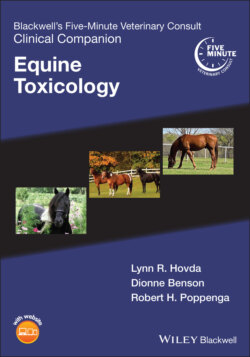Читать книгу Blackwell's Five-Minute Veterinary Consult Clinical Companion - Группа авторов - Страница 25
Chapter 3 Laboratory Testing Considerations Background Information
ОглавлениеThe best laboratory testing starts with the collection and handling of the correct sample. Sample collection and handling errors are referred to as “pre‐analytical” errors and some studies estimate that these types of errors account for between 40% and 75% of diagnostic errors.
Drug concentrations in various body fluids are a snapshot in time. Toxicity may precede elevated blood or urine levels.
Searching for an “unknown” compound is time‐, sample‐, and labor‐intensive and will cost accordingly.
There are thousands of toxic agents, but organisms have a limited number of clinical/physiological responses. Providing the laboratory with a description of clinical signs may be helpful in determining the best analytical strategy.
A “tox screen” varies in scope and may include different analytical techniques, but none are 100% encompassing. The most comprehensive screens can identify 95–98% of common toxicants.
A negative screen does not mean a toxicant is not present in the sample. Potential reasons why a toxicant is not identified include:The unknown compound may be present at a level that is too low for the test to detect.The compound was lost during sample preparation.The wrong instrument parameters were used.The compound is not included in the screening panel.
When it is known that the sample contains certain drugs, such as in blood samples collected immediately following the administration of euthanasia drugs, the laboratory should be alerted to the presence of these compounds. When the laboratory uses highly sensitive instrumentation for testing, the euthanasia medications will be present at levels that can overload detectors and contaminate equipment.
